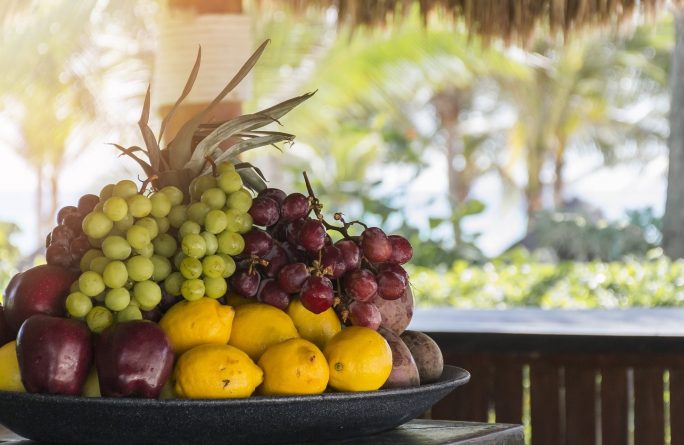Here’s what you need to know about the “glycemic index” and making healthy choices when it comes to fruit!
What is the Glycemic Index?
In the realm of nutrition, the term “glycemic index” has gained significant traction over the years, especially among those striving for healthier dietary choices. Essentially, the glycemic index (GI) ranks foods based on how quickly they raise blood sugar levels. Foods with a low GI are digested more slowly, leading to gradual increases in blood sugar levels and providing sustained energy levels.
While many might associate the concept of GI primarily with starchy foods like bread and rice, fruits also play a crucial role in understanding and managing blood sugar levels. In fact, incorporating low glycemic index fruits into your diet can be a delicious and nutritious way to support overall health and well-being.
Understanding the Glycemic Index of Fruits
Fruits vary widely in their glycemic index values. While some fruits can cause a rapid spike in blood sugar levels due to their higher sugar content and faster digestion, others have a more moderate impact, making them suitable choices for those looking to manage their blood sugar levels. Here are some examples of fruits with low to moderate glycemic index values:
- Cherries: Cherries boast a low glycemic index, making them a sweet yet blood sugar-friendly snack.
- Apples: With their rich fiber content, apples have a moderate glycemic index, offering a satisfying crunch while keeping blood sugar levels stable.
- Berries: Whether it’s strawberries, blueberries, or raspberries, most berries are low on the glycemic index scale, making them excellent additions to breakfast bowls, smoothies, or desserts.
- Peaches and Plums: These juicy stone fruits offer sweetness without the rapid blood sugar spikes associated with higher GI fruits.
- Grapefruit: Known for its tangy flavor, grapefruit has a relatively low glycemic index and is packed with vitamin C and other essential nutrients.
Incorporating Low GI Fruits into Recipes
Now that we’ve highlighted some low glycemic index fruits, let’s explore how you can incorporate them into your culinary endeavors:
- Breakfast Bliss: Start your day on a nutritious note by adding sliced apples or berries to your morning oatmeal or yogurt. You can also whip up a refreshing smoothie with a combination of low GI fruits like peaches, strawberries, and a handful of spinach for an extra nutrient boost.
- Salads with a Twist: Upgrade your salads by tossing in chunks of grapefruit or segments of oranges for a burst of flavor and a dose of vitamin C. Pair them with leafy greens, nuts, and a light vinaigrette for a refreshing and satisfying meal.
- Dessert Delights: Who says desserts can’t be both delicious and nutritious? Bake a batch of cherry or plum crumble using whole grain oats and a touch of honey for a guilt-free indulgence. Alternatively, blend frozen bananas with berries to create a creamy and decadent “nice cream” that’s low in added sugars.
- Snack Attack: When hunger strikes between meals, reach for a handful of cherries, apple slices with almond butter, or a small bowl of mixed berries to keep cravings at bay while maintaining stable energy levels throughout the day.
Indulge Guilt Free!
By incorporating these low glycemic index fruits into your meals and snacks, you can enjoy the natural sweetness of fruits without worrying about their impact on your blood sugar levels. Experiment with different combinations and recipes to discover new ways to savor the goodness of fruits while supporting your overall health and well-being.
Keep Reading: The Truth About High-Sugar Fruits
![NL Wordmark [Gradient] NL Wordmark [Gradient]](https://www.nextlevelurgentcare.com/wp-content/uploads/elementor/thumbs/NL-Wordmark-Gradient-7fm1iv6f0zylwqrxpy8kifrnrzsluqzzzofvqvs6smo.png)
